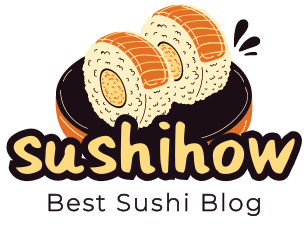Sushi doesn’t need to be limited to being delivered on conveyor-belts at restaurants; Japanese chefs find beauty in simplicity by creating traditional sushi plates made up of just rice, fish and wasabi for maximum flavour!
Dashi is an essential staple for any kitchen. Crafted with dried bonito flakes and kombu seaweed, its umami-rich broth brings extra depth of flavor to any dish.
Rice
As any sushi connoisseur will vouch, rice is one of the central elements in Japanese food culture. It provides flavor, texture, and balance when used as the foundation for preparation of sushi dishes; specifically short-grained and white colored varieties must be used with distinct tasting qualities that balance sweetness with tartness, elevating flavors from fish or other ingredients in your sushi meal.
Sushi rice requires being steamed to maintain its texture and avoid becoming sticky when mixed with vinegar and sugar, as well as being of the’sushi rice’ variety, often marked as such on its packaging. Sasanishiki or sushi-grade is known for being less glutenous than other varieties and can often be found at Japanese grocery stores like Sunrise; making this type of grain ideal for making sushi.
Rice vinegar is essential in creating sushi and can easily be found at Japanese grocery stores or online. Sushi-grade vinegar should be labeled appropriately so it can be mixed in while the hot grain remains, creating the ultimate sushi rice experience.
One essential item needed for sushi is high quality soy sauce, available both from Japanese grocery stores and online vendors. Soy sauce has long been used in Japanese cuisine to enhance flavorful dishes; when used for sushi it should be naturally-brewed for best results and taste!
Carrots
Carrots are one of the most recognizable ingredients used in Japanese sushi, providing an abundant source of vitamin A to promote eye and skin health, as well as powerful antioxidants that promote an efficient immune system.
Carrots’ bright orange hue comes from beta-carotene, an antioxidant your body converts into vitamin A. Studies have linked carrots’ powerful antioxidants with decreased risk of eye diseases like cataracts and age-related macular degeneration; additionally they offer valuable dietary fiber which promotes digestive health.
Japan sushi features a range of vegetables, from pickled daikon radish (takuan) in shinko maki and cucumber in kappa maki to pickled yam (natto) used in natto maki, avocado (hama maki), asparagus (kanpyo maki), burdock root (gobo) and yam. These ingredients can often be marinated, diced or marinated before being added into rolls for flavor and texture purposes.
Sushi preparation involves cutting carrots into thin pieces or julienned into long strips, sometimes roasting them to bring out their sweetness and improve flavor; this technique is known as karaage.
Sushi is an intricate culinary creation, one which requires skill, knowledge, and expertise in order to produce properly. When made by those skilled in its art form it can produce some of the most delectable, nutritious, and visually stunning creations possible. Sushi may not be for everyone, as some find the concept of eating raw fish unappetizing. Luckily, however, there are various kinds of sushi made using other ingredients, like avocado and cucumber, that may better satisfy people with more varied palettes. Furthermore, these alternatives have even become popular vegetarian options that have gained immense popularity in recent years. If you want to give sushi a try for yourself be sure to visit a restaurant offering quality ingredients and employing an experienced chef.
Avocado
Avocados make for an incredibly nutritious addition to sushi, providing essential monounsaturated fats which have been shown to improve heart health while decreasing diabetes and osteoporosis risks. Furthermore, avocados contain vitamins and minerals. For an easy snack option simply spread some mashed avocado on toast – you could even mix in other fruit and vegetables to create a nutritional smoothie!
Tempura flour is an indispensable part of sushi making. Used to coat seafood and other ingredients before they’re deep-fried, you’ll find this flour at most grocery stores or can buy in bulk if possible. Quality product will have a significant impact on the end result of your dish!
Sushi is typically composed of vinegared rice topped with various fixings. Sashimi (raw fish), such as tuna, salmon, eel, octopus and swordfish are frequently cut into thin slices before being dressed up with wasabi or soy sauce for garnishing. Vegetables or non-fish ingredients such as pickled daikon radish (takuan), cucumbers (kappa maki), burdock root (gobo), asparagus sweet corn yam and fermented soybeans (natto).
Avocado was not widely utilized as part of Japanese sushi until the late 1970s, though since then it has become an indispensable component in many rolls and rolls across North America. Avocado brings both creamy texture and delicious buttery flavor; plus it provides excellent source of Vitamin K, potassium and copper!

